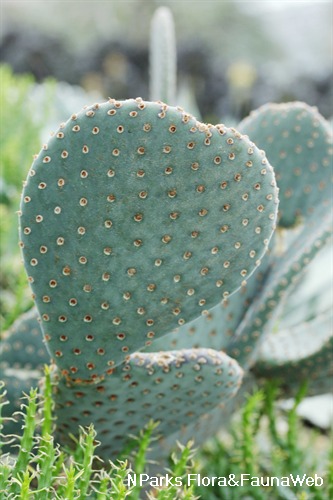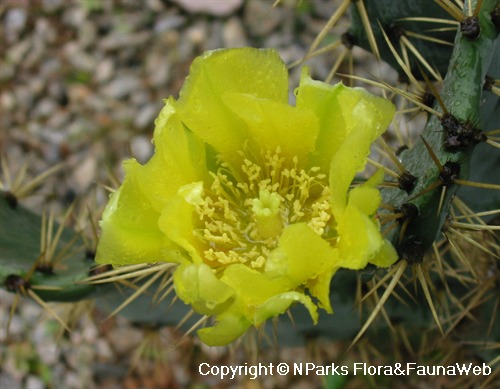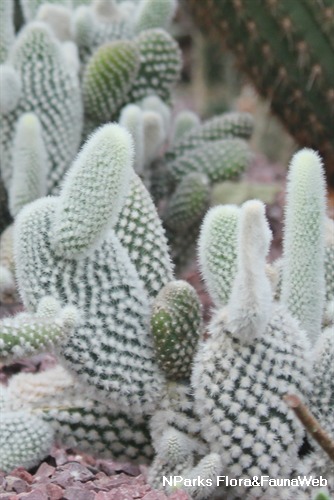
Back
Opuntia basilaris Engelm. & J.M. Bigelow
| Family Name: | Cactaceae |
| Synonyms: | Opuntia basilaris var. brachyclada, Opuntia brachyclada, Opuntia whitneyana |
| Common Name: | Beavertail Cactus, Beavertail Prickly Pear, 叢立仙人掌 |
Name
Classifications and Characteristics
| Plant Division | Angiosperms (Flowering Seed Plants) |
|---|---|
| Plant Growth Form | Herbaceous Plant, Succulent Plant |
| Lifespan (in Singapore) | Perennial |
| Mode of Nutrition | Autotrophic |
| Maximum Height | 0.3 m to 0.6 m |
| Maximum Plant Spread / Crown Width | 0.9 m to 1.2 m |
Biogeography
| Native Distribution | Southwest USA, Mexico |
|---|---|
| Native Habitat | Terrestrial (Desert / Semi-Desert) |
| Preferred Climate Zone | Desert / Arid |
| Local Conservation Status | Non-native |
| CITES Protection | True |
Description and Ethnobotany
| Growth Form | Succulent with pad-like stems, usually growing up to 0.3 m tall. |
|---|---|
| Stems | Pad-like, bluish to greyish stems are covered by white to brown, wooly areoles (a small area on a cactus that produces spines, glochids, hairs, flowers or fruits). The areoles lack spines, but have small, reddish brown glochids. |
Landscaping Features
| Desirable Plant Features | Ornamental Stems, Ornamental Form |
|---|---|
| Thematic Landscaping | Rockery / Desert Garden |
| Usage Hazard - Cons | Spines/Thorns - Stem/Branch, Irritant - Contact Allergy |
Plant Care and Propagation
| Light Preference | Full Sun |
|---|---|
| Water Preference | Little Water |
| Rootzone Tolerance | Drought Tolerant, Well-Drained Soils, Alkaline high pH Soils |
| Propagation Method | Seed, Stem Cutting |
Floral (Angiosperm)
| Flower Colour(s) | Pink |
|---|---|
| Flower Colour(s) Remarks | Magenta (Purplish pink) |
Image Repository
Others
| Master ID | 31731 |
|---|---|
| Species ID | 6130 |
| Flora Disclaimer | The information in this website has been compiled from reliable sources, such as reference works on medicinal plants. It is not a substitute for medical advice or treatment and NParks does not purport to provide any medical advice. Readers should always consult his/her physician before using or consuming a plant for medicinal purposes. |



